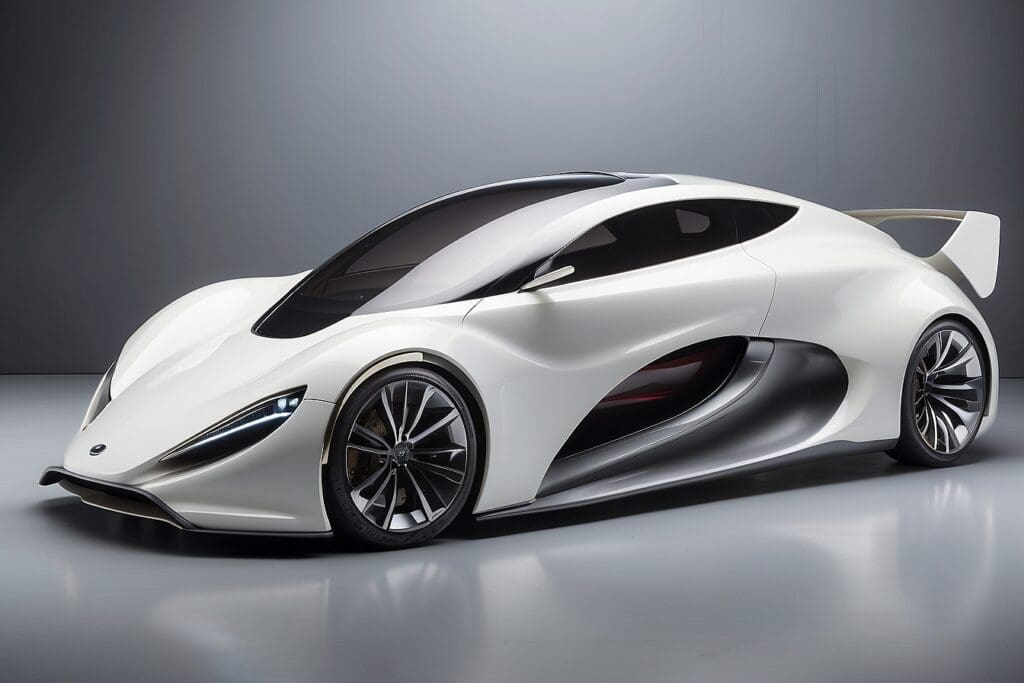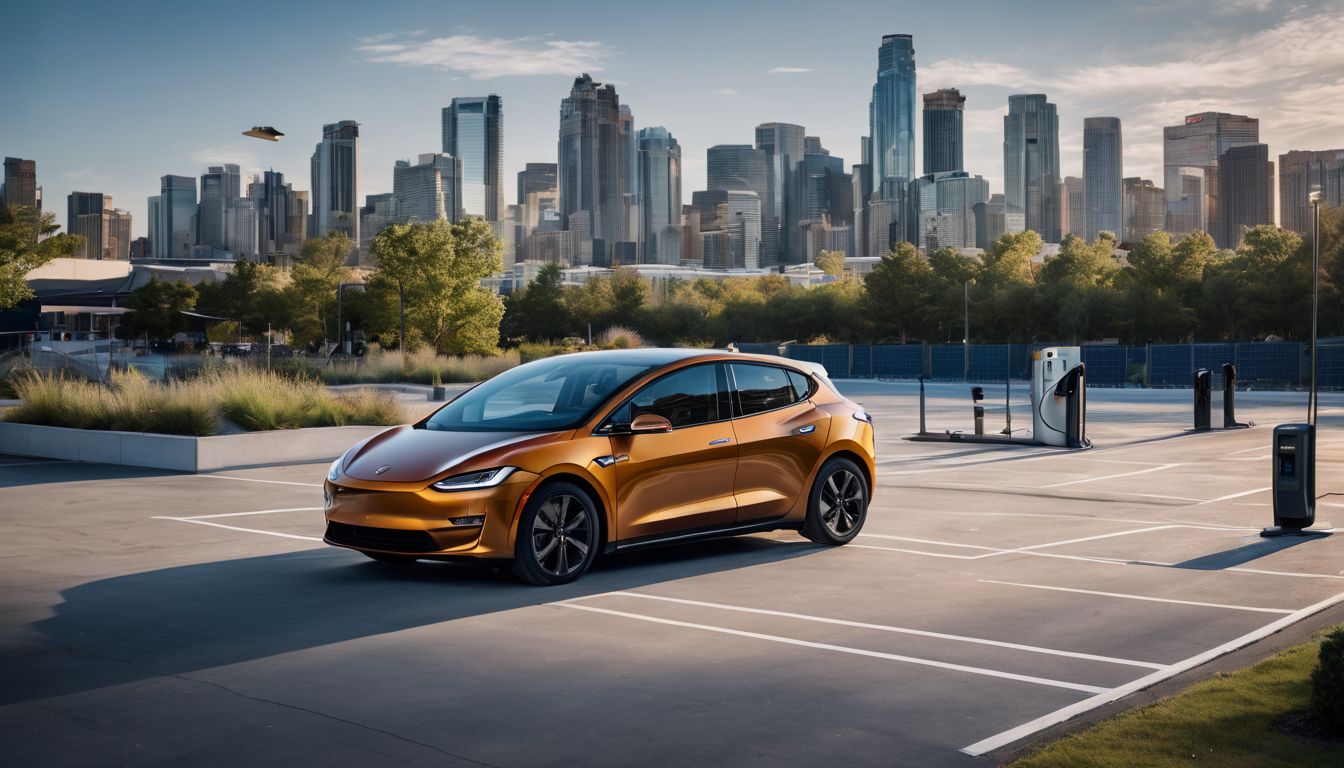We’ve all winced at the sharp rise in fuel costs recently, haven’t we? With such prices soaring, the importance of efficiency can’t be overstated. Like many motoring enthusiasts across Britain, we share a fervent interest in discovering more intelligent ways to reduce our fuel consumption without dimming the thrill of driving – and it turns out that aerodynamics is a significant part of this conundrum.
This article will delve into how sleek design is harmonising with the forefront of scientific innovation to ensure your next journey doesn’t just glide effortlessly but also goes easy on your purse and takes a kinder approach to our environment.
Brace yourself for an insightful breeze through the world of automotive advancements!
Key Takeaways
- Aerodynamics in car design is crucial for improving fuel efficiency and reducing environmental impact, as seen with Ferrari’s advanced wind tunnel testing and the use of active rear wings.
- Car designers are drawing inspiration from nature and athletic technology, such as dimpled tracksuits, to create more efficient vehicles that are both high-performing and environmentally friendly.
- Future innovations like shape-shifting cars and AI-enhanced designs will revolutionise aerodynamics further, leading to smarter, more sustainable transportation solutions that actively adapt to different driving conditions for optimal performance.
- Electric cars are taking advantage of sustainable aerodynamic solutions by using lightweight materials and streamlined shapes which enhance their range while maintaining minimal environmental impact.
- The advances in automotive aerodynamics align with a growing demand for eco – friendly transport options, highlighting a shift towards greener practices within the industry.
The Importance of Aerodynamics in Car Design
Aerodynamics plays a crucial role in car design, evolving from simply reducing drag to optimising airflow for greater performance and fuel efficiency. Recent innovations have shown how advanced aerodynamics can enhance both the design and functionality of vehicles.
Evolution of aerodynamics in car design
We’ve witnessed car design transform radically over the years, with aerodynamics becoming a pivotal element. In the early 20th century, vehicles were more about function than form, resembling boxy horse-drawn carriages minus the horses.
As speed became a priority, so did reducing wind resistance; sleek and streamlined shapes started emerging. Engineers relied on intuition at first but soon began using scientific methods to reduce drag.
Wind tunnel testing revolutionised vehicle design by providing real-world data on airflow optimisation. By simulating conditions cars face while speeding down roads and motorways, automakers fine-tuned their designs for peak aero efficiency.
It wasn’t long before eye-catching concept cars of the ’50s and ’60s hinted at future possibilities in automotive innovation. Production models gradually absorbed these advancements leading to today’s highly sophisticated aerodynamic vehicles that cut through air with minimal effort improving fuel efficiency and performance significantly.
Benefits of aerodynamic improvements
After understanding the evolution of aerodynamics in car design, it’s important to appreciate the benefits of aerodynamic improvements. These advancements contribute to:
- Enhancing fuel efficiency, leading to reduced environmental impact
- Improving overall vehicle stability and handling for a safer driving experience
- Reducing wind noise and increasing passenger comfort during travel
- Minimising air resistance, thereby boosting speed and performance
- Optimising airflow around the vehicle, decreasing drag and enhancing aerodynamic efficiency
Recent Innovations in Aerodynamic Car Design

Ferrari has been leading the way in integrating aerodynamic innovations into their car designs, with features like active rear wings and underbody diffusers. Other notable car manufacturers have also incorporated aerodynamic features inspired by dimpled tracksuits and helicopter rotors, improving overall vehicle performance and efficiency.
Ferrari’s aerodynamic innovations
Ferrari continuously pushes the boundaries of aerodynamic car design. Their recent innovations focus on reducing drag and improving downforce for enhanced performance and fuel efficiency.
By integrating advanced wind tunnel testing, Ferrari has successfully developed streamlined vehicles that maximise aerodynamic technology to minimise air resistance, thus optimising electric cars’ energy consumption.
The incorporation of cutting-edge vehicle aerodynamics in Ferrari’s designs emphasises sustainability while maintaining superior driving dynamics. These innovative aerodynamic solutions not only enhance the performance of their cars but also contribute positively to environmental conservation by reducing carbon emissions.
Other notable car designs incorporating aerodynamic features
After examining Ferrari’s aerodynamic innovations, it’s worth noting other notable car designs that have successfully incorporated advanced aerodynamic features. These innovations demonstrate the ongoing efforts in automotive engineering towards improving fuel efficiency and reducing environmental impact:
- The McLaren Speedtail uses a teardrop shape to enhance aerodynamics, reducing drag and increasing speed.
- The Porsche 911 GT3 RS boasts a large rear wing and front splitter, optimising downforce and stability at high speeds.
- The Tesla Model S features a smooth underbody and active air suspension for improved airflow, reducing drag and enhancing efficiency.
- The Chevrolet Corvette C8 employs active aerodynamics, with air ducts that open or close to regulate airflow for enhanced performance.
- The Nissan GT – R Nismo utilises a unique body design with aggressive angles and aero components for increased downforce and stability.
- The Subaru WRX STI incorporates functional hood scoops and rear spoilers to manage airflow and improve overall aerodynamic performance.
The use of dimpled tracksuits and helicopter rotor-inspired designs
Car designers are turning to nature and sports technology for aerodynamic inspiration. Dimpled tracksuits, similar to those used in sports, have influenced car design by reducing drag and improving fuel efficiency.
In addition to this, helicopter rotor-inspired designs have provided a new perspective on creating efficient air flow around vehicles. Implementing these ideas from sports and aviation can lead to significant advancements in automotive aerodynamics, benefiting both the environment and drivers.
These innovative approaches not only enhance the performance of cars but also contribute towards environmentally sustainable transportation solutions. By drawing inspiration from diverse sources such as sports apparel and flight technology, car manufacturers are pushing the boundaries of traditional car design to create more eco-friendly vehicles with improved aerodynamics that resonate with environmentally conscious individuals seeking efficient and sustainable modes of transport.
The Future of Automotive Aerodynamics
Shape-shifting cars are on the horizon, with the potential to dynamically adjust their shape for optimal aerodynamics. Utilising AI and technology will play a key role in further enhancing car design and achieving maximum efficiency in aerodynamics.
Shape-shifting cars
Car manufacturers are exploring new ways to improve aerodynamics, with shape-shifting cars at the forefront of innovation. These vehicles have the ability to adjust their form in real-time, optimising their shape for different driving conditions and reducing drag.
By seamlessly adapting to changes in speed or environmental factors, these cars can achieve maximum efficiency without compromising performance.
The advances in shape-shifting car technology represent an exciting step towards creating more sustainable and environmentally friendly vehicles that meet the demands of modern driving.
Such developments promise a future where cars not only prioritise aerodynamic design but also actively respond to various road and weather conditions – ultimately making our journeys safer, smoother, and far more efficient.
Utilising AI and technology for optimal aerodynamics
As we look to the future of automotive design, one of the most exciting prospects is the integration of AI and advanced technology for achieving optimal aerodynamics. Car manufacturers are increasingly turning to artificial intelligence to analyse complex data sets and streamline the design process.
By harnessing AI capabilities, they can efficiently optimise vehicle shapes for minimal drag while ensuring maximum efficiency. Additionally, technological advancements such as wind tunnel testing simulations and computational fluid dynamics enable precise fine-tuning of aerodynamic elements.
This innovative approach not only enhances performance but also contributes to reducing fuel consumption and minimising environmental impact — crucial factors for environmentally conscious individuals concerned with conservation and sustainability.
Furthermore, these cutting-edge developments in aerodynamics align with the growing demand for eco-friendly transportation solutions. By incorporating state-of-the-art technology and AI into aerodynamic car design, automotive manufacturers strive to create vehicles that not only deliver exceptional performance but also lower carbon emissions.
Sustainable aerodynamic solutions for electric cars
Electric cars are benefitting from sustainable aerodynamic solutions, promoting energy efficiency and reducing drag. These innovative designs enhance the car’s range while ensuring minimal impact on the environment.
Incorporating lightweight materials and streamlined shapes, electric vehicles are optimised for improved aerodynamics, ultimately contributing to lower energy consumption. By integrating these eco-friendly features into car design, manufacturers are actively supporting conservation efforts and meeting the needs of environmentally conscious individuals.
As we strive to reduce our carbon footprint and embrace eco-friendly transport options, sustainable aerodynamic solutions play a pivotal role in driving innovation within the automotive industry.
Conclusion
In conclusion, innovations in aerodynamic car design are paving the way for more efficient and sustainable vehicles. Car manufacturers are continuously evolving their designs to reduce drag and increase fuel efficiency.
With advancements in technology and materials, the future of automotive aerodynamics looks promising as we strive towards environmentally friendly transportation solutions. This ongoing focus on aerodynamics reflects a commitment to both performance and sustainability in the automotive industry.
FAQs
1. What does aerodynamic car design mean?
Aerodynamic car design refers to shaping cars to reduce the air resistance or drag they face when moving, making them faster and more fuel-efficient.
2. How do innovations in aerodynamics improve a car’s performance?
Innovative aerodynamic technology aims at drag reduction which helps cars move more smoothly through the air, boosting speed and cutting down on fuel use.
3. Can you give examples of aerodynamic features in modern cars?
Sure! Modern cars might have sleek shapes, special spoilers, or covers underneath that all work together to guide air flow better and cut down on drag.
4. Are new aerodynamic designs being used in everyday vehicles?
Yes indeed! Many new family cars and other everyday vehicles now use advanced aerodynamics to get better mileage and offer a smoother drive.





